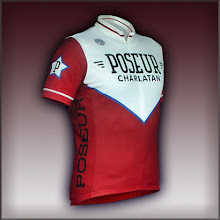He once said; "Just give me smooth pavement, and I'll be happy to do the rest regarding my safety and access."
Amen, brother!
Around here, some roads are so bad, local governments go out of their way to deny responsibility for them.
Here is a case in point. Prachyl Road is so poorly maintained, it is now a hodge-podge of nearly interconnected filled in potholes. If you were to remove all of the "fixed" potholes, there would scarcely be any road at all!


The surface here resembles cobblestones, but without the uniformity afforded by them. It is a disgrace to whichever road department that thinks this is an acceptable level of maintenance for the long-suffering taxpayers of Ennis. Ellis county is officially denying any responsibility, and they have even put up a sign to make sure you know!


In the photos above, I took them from the same spot but pointing the camera in the opposite direction.
Operators of automobiles are often annoyed that they are not able to proceed at their desired speed on the main roads. They have told me to use more of the secondary roads to make their trips more pleasant.
The answer, of course is the same as this one posed to the motorists; "why don't you use those secondary roads?" Cyclists prefer the busy main roads for the same reason motorists do.
Secondary roads are not as direct between popular areas as the main roads are.
Secondary roads are poorly maintained, as local governments siphon away dollars dedicated to maintenance for other things.
Secondary roads have more stop signs and uncontrolled intersections and junctions. Often with an extra helping of poor sight lines to boot. They have lower speed limits for a reason.
You want me to ride off of the main roads? Make them more attractive to cyclists then.
I am not asking for special lanes and infrastructure. I am simply asking for better roads. I won't even mind if you use them too!



Hey, thanks for the props and links! That invisible maintenance line is pretty funny. Of course, nothing but pure agreement about your sentiments on why cyclists use main roads.
ReplyDeleteYes, I want full credit for the bump in your daily traffic of two or three unique visits. I am renowned for driving traffic!
ReplyDeleteI pray you are feeling better. I imagine watching your local government at work delayed your recovery.
From an Interview with John F.
ReplyDeletehttp://bicycling.about.com/od/thebikelife/a/forester_3.htm
The fact that a road is built to serve motor traffic does not mean that it doesn’t serve bicycle traffic. After all, any road wide enough for motor traffic is sufficiently wide for bicycle traffic....
By and large, the best way to accommodate mixed motor and bicycle traffic is for the outside through lane to be sufficiently wide for motorists to overtake bicyclists within it. That answers the problems of motorist delay and cyclist guilt without introducing the confusion of bike-lane stripes.
Chip, Texas uses 14 feet travel lanes, PM can supply the details.
Welcome back, danc!
ReplyDeleteOn this point, I disagree with John Forester. I prefer narrow outside lanes. I like to think of them as ten foot wide bike lanes that are available for automobiles to use when cyclists are not present.
The TTC defines a "lane too narrow to share side by side" as less than 14 feet for bicycles. Have you seen lanes wider than fourteen feet around here? Pick a familiar road and estimate how wide it is. Then pull out a tape measure and see how close your estimate was. You will likely be surprised. I was.
Put a tape measure to the back of a SUV. How wide are they? (Six and a half feet.) When you know that, it is a lot easier to estimate lane width by comparing similar vehicles to the lane as they travel down it.
In my post Nice To Meet You Officer Watson the third photo from the top, there is a view of traffic on West Ennis Avenue. How wide would you estimate the outside lane is? I estimated ten feet at the time, and I was wrong.
Texas uses mostly ten foot lanes, and sometimes lanes as wide as twelve feet. I have seen eight foot lanes on one arterial in the city of Dallas, (2300 block of South Westmoreland Road) but I have not yet seen fourteen foot lanes anywhere.
Ouch! It hurts just to look at that patchwork.
ReplyDeleteWow, that surface is awful! I hope all of Ennis County roads don't look like that.
ReplyDeleteThere are 14'+ foot lanes in Fort Worth. They're very comfortable to ride in whether motorists are present or not. ChipSeal commented on a few of them last Saturday. They're classsic "boulevard" configurations. I'd guess most of them originally had parking that has since been eliminated.
ReplyDeleteThere are similar roads in North Tarrant County. Most of THOSE technically allow parking but nobody ever parks on them due to the subdivision configurations. Those are also very comfortable to share with motorists.
I like them even better than narrow outside lanes, though either is really easy to ride in, regardless of motorized traffic level.
Those in the picture are like some of the OTHER roads in North Tarrant County. Those aren't fun to ride, even if no motor traffic is around. You do it because it's between you and where you need to go...
They are nice, but the speed limit was low also. They would not be as comfortable for me as a narrow lane when the speed limit for both of them was 55 MPH!
ReplyDelete